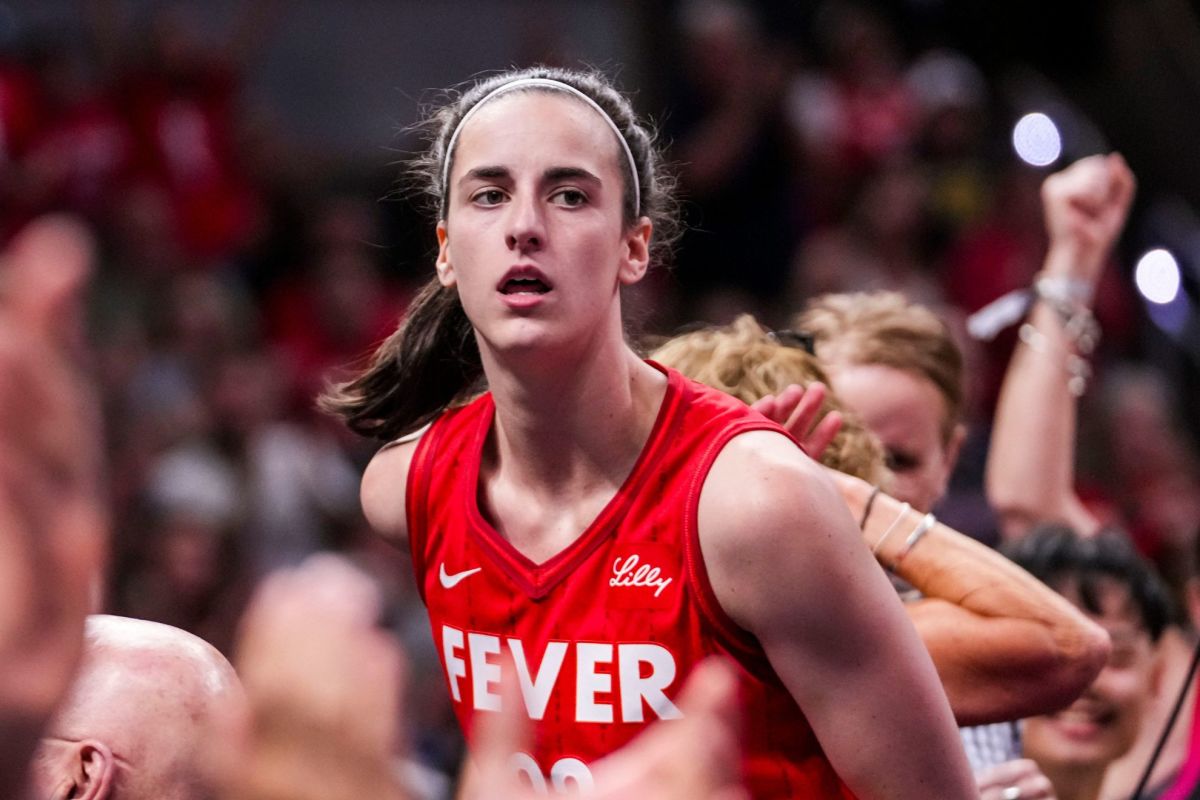
The world of women’s basketball is witnessing something unprecedented. The ticket market for WNBA preseason games has exploded, and at the center of it all is Caitlin Clark. Her return to Iowa for a preseason matchup between the Indiana Fever and Brazil’s national team has become one of the hottest sports events of the year. In contrast, Angel Reese’s homecoming game with the Chicago Sky against the same opponent has struggled to draw similar demand. The numbers tell a compelling story of fan interest, star power, and shifting dynamics in women’s basketball.
A Sellout in Record Time
When the Indiana Fever announced a preseason exhibition at Carver-Hawkeye Arena on May 4th, few could have predicted what followed. Tickets were first offered to season ticket holders and top donors, but they didn’t last long. The entire 15,000-seat arena sold out in just 36 minutes—an unheard-of feat for a preseason WNBA game.
Notably, the general public never even got a chance to buy tickets. The presale alone wiped out all available inventory, leaving thousands of fans empty-handed. The demand was so high that websites crashed, transactions timed out, and payment processing systems struggled to keep up.

While sports arenas sell out all the time, this was different. It was a preseason game featuring a WNBA rookie. The level of interest far exceeded expectations and even rivaled some NBA games.
The Resale Market Frenzy
What happened next was equally stunning. With no tickets left at face value, fans turned to secondary markets like StubHub, SeatGeek, and Vivid Seats. Prices skyrocketed. The cheapest resale tickets were going for $500, and lower-bowl seating quickly jumped into the thousands. Courtside seats? Some listings reached $6,000 per ticket, a price point typically reserved for the NBA Playoffs.
At one point, a single ticket was listed at an astonishing $45,000. While that price may have been unrealistic, it symbolized just how intense the demand had become. The Caitlin Clark phenomenon had turned a WNBA preseason game into a must-see spectacle, one that fans were willing to pay premium prices to experience.
Meanwhile, in Louisiana…
At the same time, another high-profile WNBA rookie was also preparing for a homecoming. Angel Reese and the Chicago Sky scheduled their own preseason matchup against Brazil at LSU’s Pete Maravich Assembly Center. It was supposed to be a big moment, a chance for Reese to return to the school where she became a national champion.
But the response was drastically different. Unlike Clark’s game, where demand far exceeded supply, Reese’s homecoming game struggled to sell tickets. Prices remained as low as $29, yet plenty of seats remained unsold.

Even premium seating near the court was relatively cheap, hovering just above $100. The secondary market, which exploded for Clark’s game, was nearly silent for Reese’s. While some listings appeared at artificially high prices—such as an eyebrow-raising $88,000 ticket—these seemed more like speculative attempts to manufacture hype rather than a reflection of real demand.
What Does This Say About Women’s Basketball?
The stark contrast in ticket demand has ignited debate across the sports world. Why is Caitlin Clark’s game selling at record-breaking levels while Angel Reese’s is struggling to fill seats? Several factors contribute to the phenomenon:
1. Clark’s Popularity in Iowa
Caitlin Clark isn’t just any WNBA rookie—she’s an Iowa legend. Her four years at the University of Iowa made her a household name in the state, and she built one of the most passionate fan bases in college basketball history. Bringing her back to Carver-Hawkeye Arena was always going to generate massive interest.
2. A Broader Appeal
Clark’s game attracts more than just local fans. She has become the face of women’s basketball, drawing national and even international attention. Her ability to score, dish flashy assists, and pull up from deep range has captivated basketball fans across the board. That widespread appeal translates into higher ticket demand wherever she plays.
3. The WNBA’s Market Shift
The overwhelming demand for Clark’s preseason game suggests something bigger is happening. Historically, women’s basketball has struggled with ticket sales, but Clark is proving that superstar talent can drive major revenue. If her presence can sell out arenas in minutes, it signals a shift in how women’s basketball is perceived and valued.

4. The Reese Factor
Angel Reese is an incredibly talented and marketable player. Her college career at LSU was spectacular, and she played a crucial role in growing women’s basketball. However, the ticket sales discrepancy suggests that Clark’s fan base is simply larger and more engaged at this moment. This doesn’t mean Reese lacks star power—it just means the demand for her games isn’t at the same level yet.
Should the WNBA Have Moved the Game?
Some analysts argue that Clark’s game should have been moved to a bigger venue. Carver-Hawkeye Arena seats 15,000, but given the demand, a 20,000+ seat arena might have been more appropriate.
The conversation extends beyond Iowa. If Clark continues to generate this level of interest throughout the WNBA season, Fever games could regularly sell out. Should the league consider scheduling her games in larger arenas? Could she drive attendance growth across the entire WNBA?
Final Thoughts
The Caitlin Clark Effect is real, and it’s reshaping women’s basketball. Selling out a preseason game in 36 minutes, driving resale ticket prices into the thousands, and creating national buzz—all of this is unprecedented for the WNBA.
Meanwhile, Angel Reese’s homecoming game serves as a reminder that not all stars generate equal demand. Women’s basketball is growing rapidly, but right now, Clark is the main attraction. If the WNBA capitalizes on this momentum, it could mark the beginning of a new era for the league.
Whether it’s ticket prices, TV ratings, or jersey sales, Caitlin Clark has already changed the game. And she hasn’t even played a single minute in the WNBA yet.